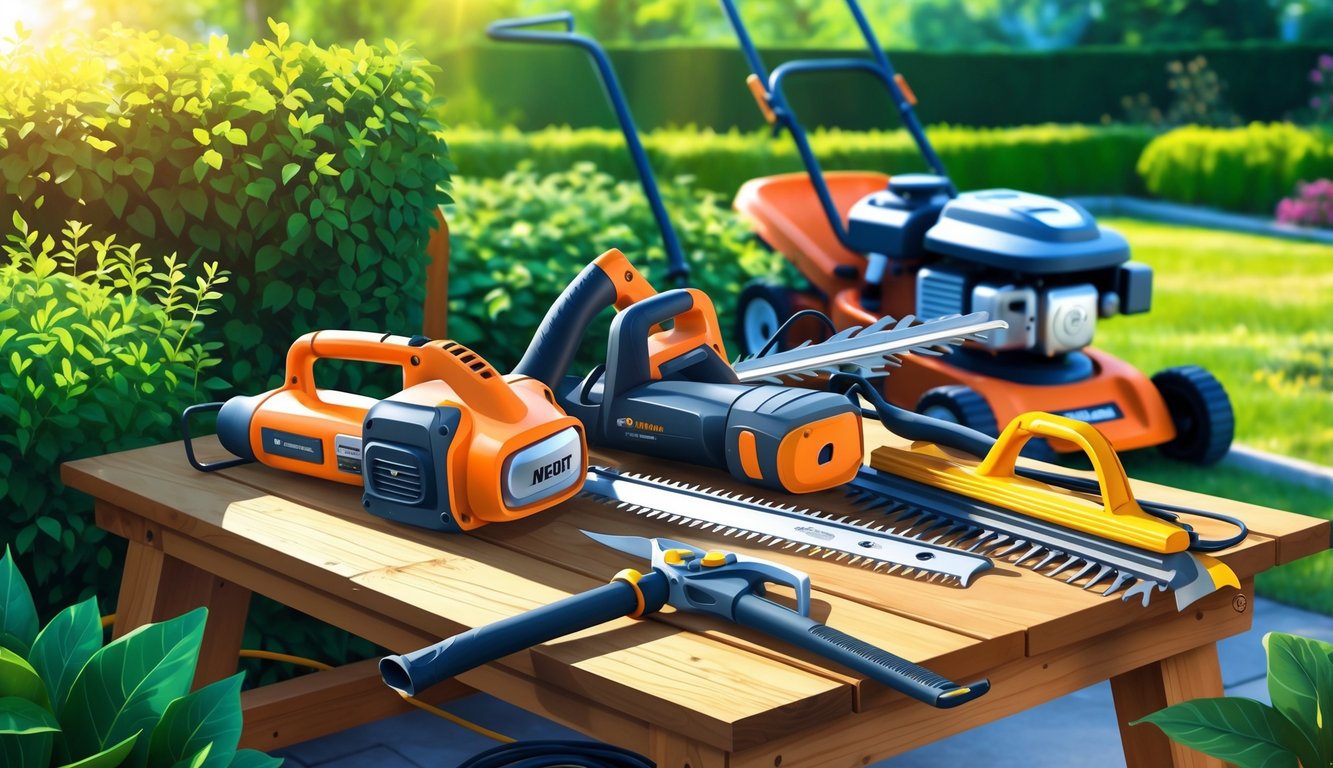
Manual Tools That Never Go Out of Style
Honestly, nothing wastes time like hunting for a power tool when a manual one would’ve done the job—faster, easier, with way less yelling. Sunrise, and I’m already testing this theory: ergonomic rakes don’t help if your leaf pile explodes, and one flat tire on a wheelbarrow? Watched a guy switch to buckets out of pure rage.
Rakes and Their Everyday Uses
Rakes get shoved in corners, but forget one and you’ll regret it. Leaf rakes—big, fan-shaped, fiberglass handles from Fiskars or True Temper—turn spring cleanup into something tolerable. The old guys on my crew won’t touch plastic tines—steel’s the only way to survive acorns and thatch.
But hit wet debris? Suddenly, you’ll want a garden rake—short, thick metal tines, claws through damp dirt where leaf rakes just fold. Popular Mechanics says most crews bring three types: fine leaves, heavy-duty for gravel, and a general one for beds. Sounds like overkill until you snap a handle mid-job and your whole day goes sideways.
There’s something about that scraping sound—nothing else like it. Except maybe when I tried raking fescue with a busted tine and ended up hand-picking clumps for an hour. Lesson: good rakes look beat up because they’re weighted right (real study, University of Vermont ag extension, look it up). And, weird tip—store handles upright or they warp, then you’re back to square one.
Wheelbarrows for Effortless Hauling
I still see new guys dragging two five-gallon buckets of mulch like they’re on some medieval quest, and honestly, I just want to shove a wheelbarrow at them and walk away. The good old single-wheel, steel tray—Truper or Jackson if you’re not into bruised shins—absolutely destroys buckets for volume. Plastic trays? Nope, unless you want to chase shards across the yard. Pneumatic tires are fine until they’re not, but flat-free ones exist, and even if the tread’s weird, at least you’re not pumping them up every week.
Last fall, my wheelbarrow handles splintered—oak chips, nails, maybe my own stupidity—but I just kept using it because I’m stubborn or cheap, or both. Is it really on every “most-used landscaping tools” list? I mean, yeah, but nobody tells you how often you’ll use it for rocks, mulch, or that awkward plant you wish you’d never agreed to move. Don’t overfill. Seriously. You tip a full wheelbarrow in front of a client, and they’ll talk about it for years.
Here’s a weird trick: I line the tray with cardboard scraps so wet soil or gravel doesn’t cement itself into the corners. Is that OSHA-approved? Probably not. Some old foreman taught me, and I’m not convinced it matters until rain ruins everything anyway. Why do wheelbarrows still have just two handle styles? I start thinking about it, then forget, then remember when my hands hurt.
Irrigation Tools for Efficient Watering
Every job site has turf, and every job site somehow forgets about water until it’s a crisis. I’ve wasted hours untangling hoses that only tangle when I’m running late. Sometimes I pray for rain, which never works, but whatever. These are the tools you keep out of the truck, because if you don’t, you’re just making your day longer for no reason.
Sprinkler Systems and Drip Irrigation
People keep dragging around ancient green hoses while I’m over here yelling about rotary heads—Rain Bird, Hunter, whatever, pick your camp. Some guys act like it’s a cult. My crew boss insists, “A misaligned pop-up is why you get drowned tulips next to dead grass.” Is he right? Maybe. I’ll fight anyone who says drip irrigation isn’t better for beds and veggie patches, even if everyone complains about the price. Tubing stakes, pressure regulators, emitters—they’re fiddly and annoying, but at least the watering’s even.
I watched one client’s water bill drop nearly a third after she ignored me for years, then the HOA threatened to fine her. It doesn’t matter if you use a massive rotor or a sad little soaker—the point is hitting the roots, not just wetting leaves. Tools? Endless. Trenchers (my shoulder’s best friend), pipe cutters that dull after a week, punch tools that vanish by August.
Choosing the Right Irrigation Controllers
If I have to listen to one more “smart” controller whine about Wi-Fi, I’ll lose it. Controllers matter, though, because every customer wants to “set it and forget it.” Rain Bird ESP-TM2, Hunter Hydrawise, or some no-name box with “ET adjustment” and a million settings—whatever. I only use ones that lock and survive rain. Got sick of replacing missing controllers after some genius decided to “borrow” one last summer.
Honestly, I want a controller with a screen I can read in the sun, clear buttons, and a pause feature so I don’t get soaked testing zones. WaterSense-labeled ones save, what, 8,800 gallons a year? That’s what the EPA claims, which is either terrifying or impressive, depending on your mood. Ignore the app hype unless your client actually knows their password—they never do. Most of my headaches start with, “I can’t turn off zone 3.”
Seasonal adjustment? Great, until the thing waters after rain because the sensor failed. Surge protector is mandatory. Lightning is real, and I’m not rewiring another controller at sunset. Want more tool specifics? Here’s a list of essential irrigation tools and irrigation system maintenance tips. Go nuts.